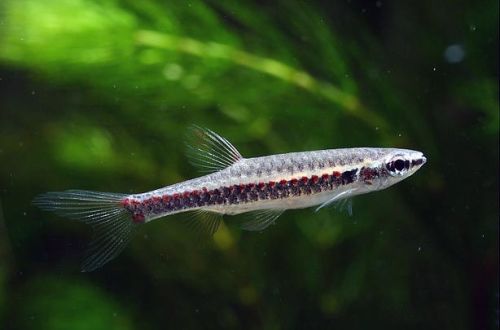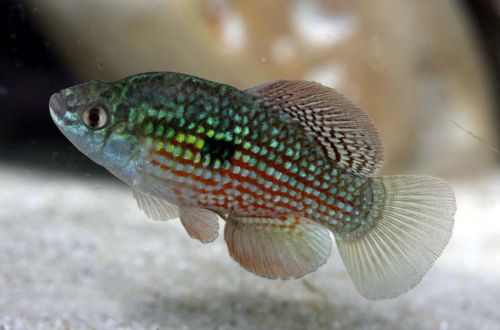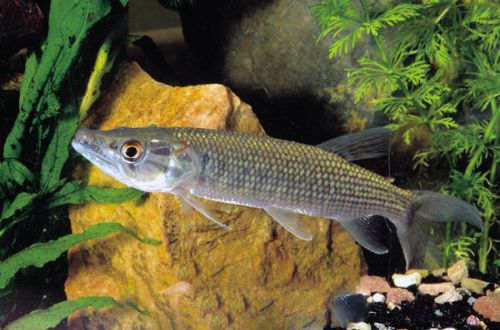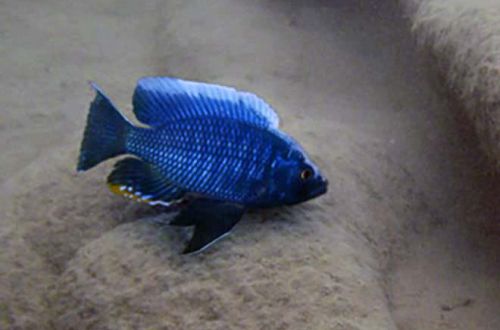
Boadzulu
Boadzulu, scientific name Nyassachromis boadzulu, belongs to the family Cichlidae (Cichlids). The former Latin name is Haplochromis boadzulu, which is why the prefix “Haplochromis” is often used. Peaceful bright fish, however, this definition refers to males. Females look more modest. Considered easy to keep, provided the right conditions are provided.
Scientists disagree on whether to consider the genus Nyassachromis to be members of the Utaka group of cichlids. Within the framework of our site, to simplify the classification, Boadzulu is still referred to as Utaka as opposed to the Mbuna group living in the same lake.

Contents
Habitat
Endemic to Lake Nyasa, located in the African Rift Valley between the states of Malawi, Tanzania and Mozambique. Occurs in the southern part of the lake near the islands of Boadzulu and White Rock in shallow open water over sandy substrates.
Brief information:
- The volume of the aquarium – from 300 liters.
- Temperature – 26-28°C
- Value pH — 7.6–8.5
- Water hardness – medium and high hardness (10-25 dGH)
- Substrate type – sandy, rocky
- Lighting – subdued or moderate
- Brackish water – no
- Water movement – light or moderate
- The size of the fish is 13–17 cm.
- Nutrition – any food rich in protein
- Temperament – conditionally peaceful
- Keeping in a harem with one male and several females
Description
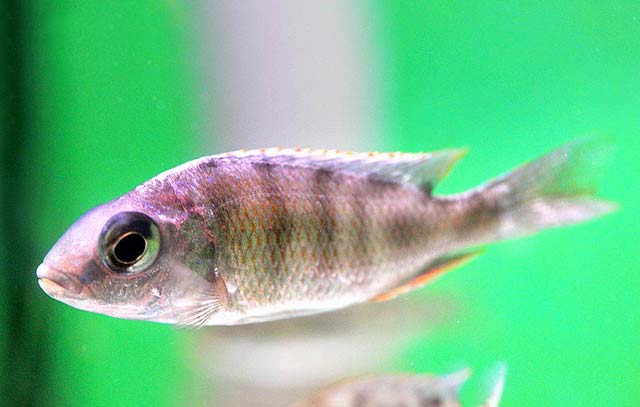
Males reach a length of up to 17 cm and have a rich blue-blue color with a barely noticeable pattern of dark vertical stripes. A light stripe runs along the edge of the dorsal fin, part of the back and head. The dark blue anal fin has blue flecks, and its lower edge has a contrasting yellow color.
Females are noticeably smaller (up to 13 cm) and have a gray or silver body color with a similar body pattern of dark stripes.
Food
In nature, they feed on zooplankton in the water column. In the home aquarium, it is necessary to provide an appropriate diet consisting of small invertebrates, such as brine shrimp, bloodworms, daphnia. A good choice would be food designed for Utaka cichlids, produced by many manufacturers.
Maintenance and care, arrangement of aquariums
Boadzulu cichlids need a lot of swimming space, so the optimal tank size for a group of 3-5 fish starts at 300-350 liters. The design is simple and includes sandy soil and heaps of stones and boulders. Plants are not required, but if desired, several species that can grow in an alkaline environment can be placed.
Maintaining a high pH and dGH hydrochemistry is key to long-term maintenance.
Maintenance of the aquarium is quite simple. A set of mandatory procedures consists of a weekly replacement of part of the water with fresh water and the removal of accumulated organic waste (feed residues, excrement). Both procedures are usually combined.
Behavior and Compatibility
Due to the peculiarities of the water composition characteristic of Lake Nyasa, other representatives of this biotope are mainly suitable as aquarium neighbors. For example, cichlids Utaka, Aulonokary. In large volumes of water from 1000 liters (recommended), it is permissible to stay together with Mbuna.
Boadzulu is considered a peaceful species, getting along with its relatives. So, in nature they are often found in large flocks. However, in a closed, confined environment, behavior can change, especially during the breeding season. Males will compete with each other, in order to reduce the risks of possible aggression, it is desirable to keep a group like a harem – one male and several females.
Breeding / breeding
During the breeding season, the male builds a sandy crater at the bottom – a hill or mound with a depression in the center. It will become a breeding ground. Then he proceeds to courtship, which is sometimes overly persistent. When the female accepts signs of attention, the couple lays several dozen eggs. After fertilization, the female takes the eggs into her mouth, where they will stay throughout the entire incubation period.
Such an unusual way of carrying eggs has evolved as a response to a very competitive external environment.
The fry appear within 3-4 weeks. At first, they continue to be around the female, like a small cloud, and in case of danger they can again hide in their secluded place. This continues until the fry grow up.
Fish diseases
In a favorable environment, diseases rarely occur. In this group of cichlids, Malawian bloat is the most common disease – its cause lies precisely in the content in unsuitable conditions, for example, at low pH and dGH values. For more information on symptoms and treatments, see the Aquarium Fish Diseases section.



